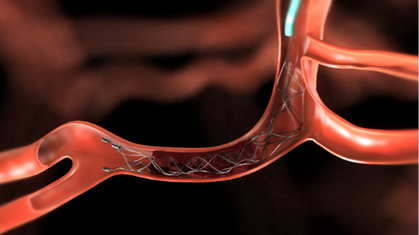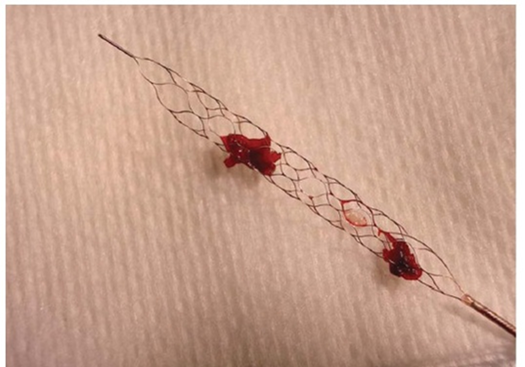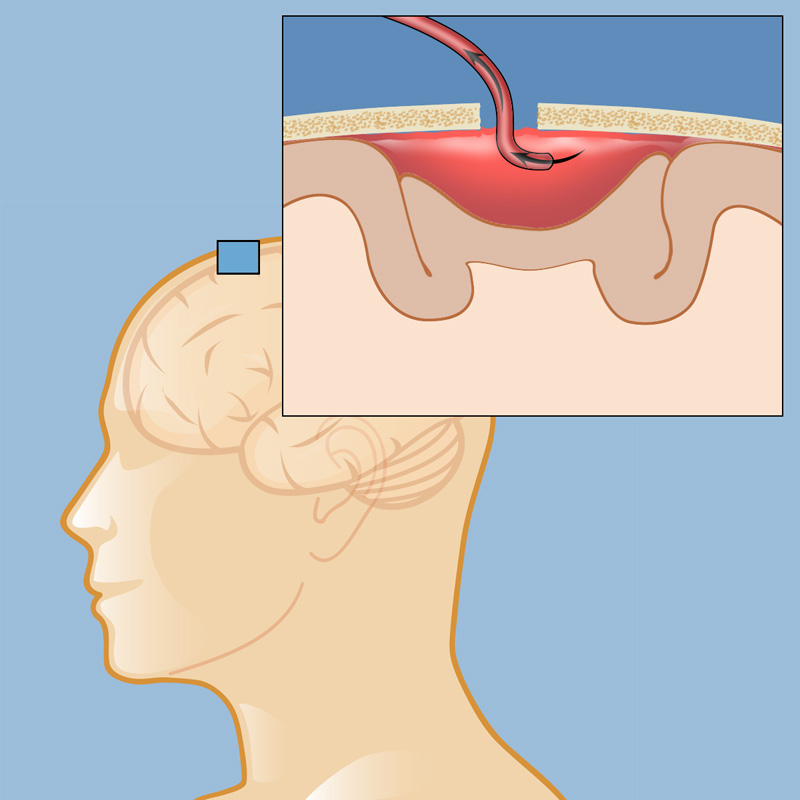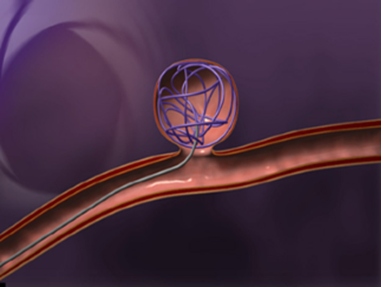Ischemic Stroke Treatment |
|
| Alteplase/Activase is also known as the “clot busting” drug. This is the only clot busting drug currently approved for stroke. This drug is very time dependent and in order to be eligible to receive this treatment the stroke patient must present to the ED within 4.5 hours of the time that they were last known to be well. Once 4.5 hours from last known well is exceeded, Alteplase cannot be administered. |
It is important to note, that the sooner the patient receives treatment, the better, as Alteplase/Activase and MER can be used together to help minimize disability of stroke, if the patient presents in the appropriate time window. |
| Mechanical Endovascular Retrieval (MER) is a potential treatment for strokes that arrive within 24 hours of last known well that have a large vessel occlusion (LVO). An LVO is a clot that has developed in one of the “large” vessels of the brain. An LVO is identified and confirmed on imaging done in the ED. These clots can potentially be retrieved by a Neurosurgeon by placing a catheter into a stroke patient’s artery up to the large brain vessel that is occluded, and pulling out the clot with a retrieval device. Once the clot is removed, blood is then able to flow normally. | |
  |
|
|
If a patient is not a candidate for these treatments they will be admitted to the hospital for medical management of stroke and secondary prevention. A work up will be performed to help identify ways to prevent another stroke, as well as other services that will assist in maximizing the patients’ needs in order to get them back to their normal lifestyle. |
|
Hemorrhagic Stroke Treatment2 types: Intracranial Hemorrhage (ICH) and Subarachnoid Hemorrhage (SAH)Hemorrhagic Strokes are caused by a rupture (of a blood vessel or an aneurysm) which causes blood to leak into the brain. The goal of treatment for hemorrhagic stroke is to stop the bleeding! |
|
Treatment for Hemorrhagic strokes MAY include:Medications for Blood Pressure Control Medications to reverse any “blood thinning” medications that the patient may be taking Having a drain placed in the brain Cerebral Angiogram Procedure used to identify the cause and treat (if needed) |
|
Types of treatment for ICH include:
|
Types of treatment for SAH caused by an aneurysm include:
Coiling: A procedure where a platinum coil is placed into the aneurysm to prevent re-bleeding of the aneurysm.
Clippings: A procedure where the skull is opened and a clip is placed across the neck of the aneurysm to prevent re-bleeding of the aneurysm.
|
| Which procedure is chosen dependent upon the location of the aneurysm and the neurosurgeon.
If a patient with a hemorrhagic stroke is not eligible for the above treatments they will be admitted to the hospital for medical management of stroke and secondary prevention. A work up will be performed to help identify ways to prevent another stroke, as well as other services that will assist in maximizing the patients’ needs in order to get them back to their normal lifestyle. |
|



